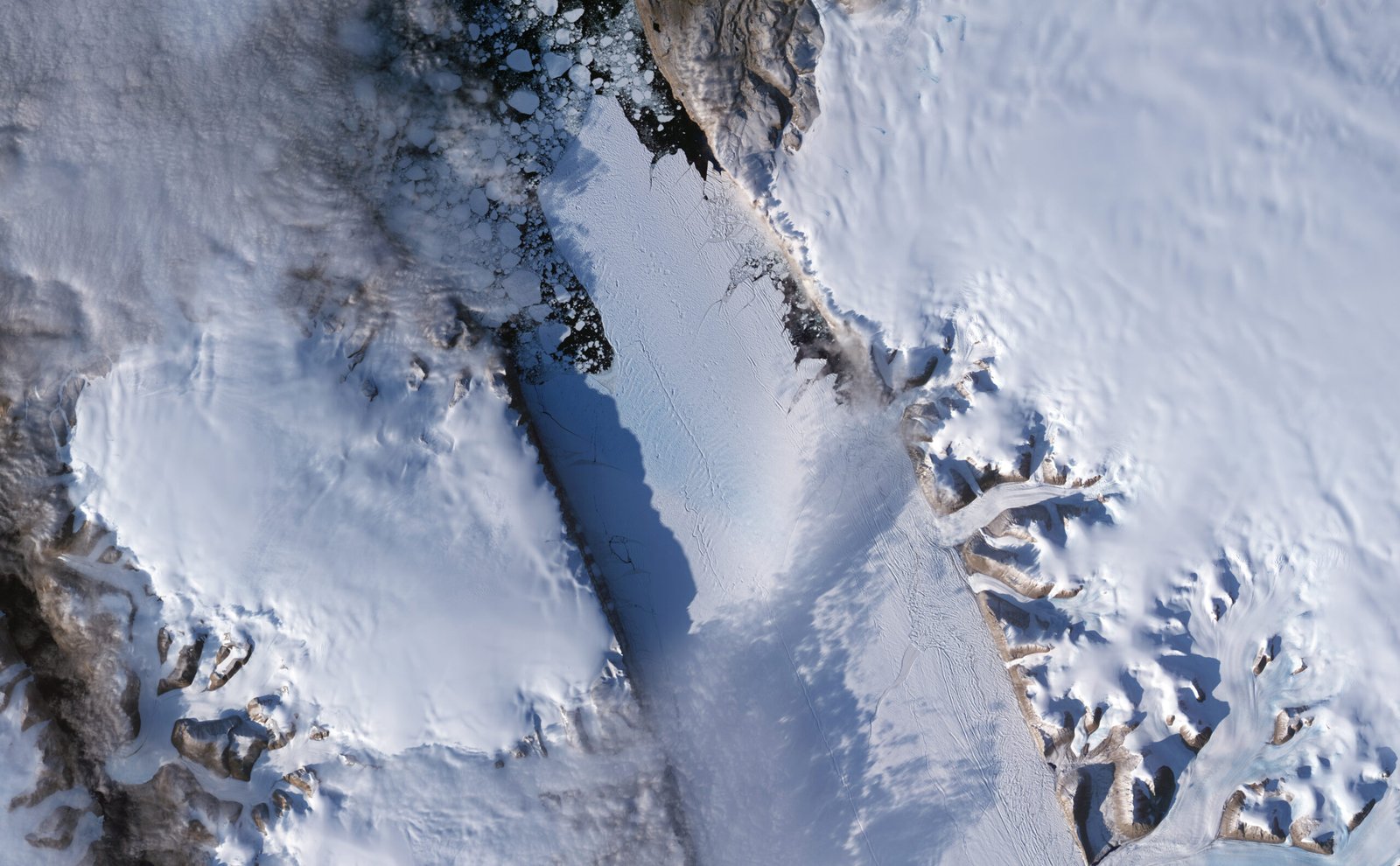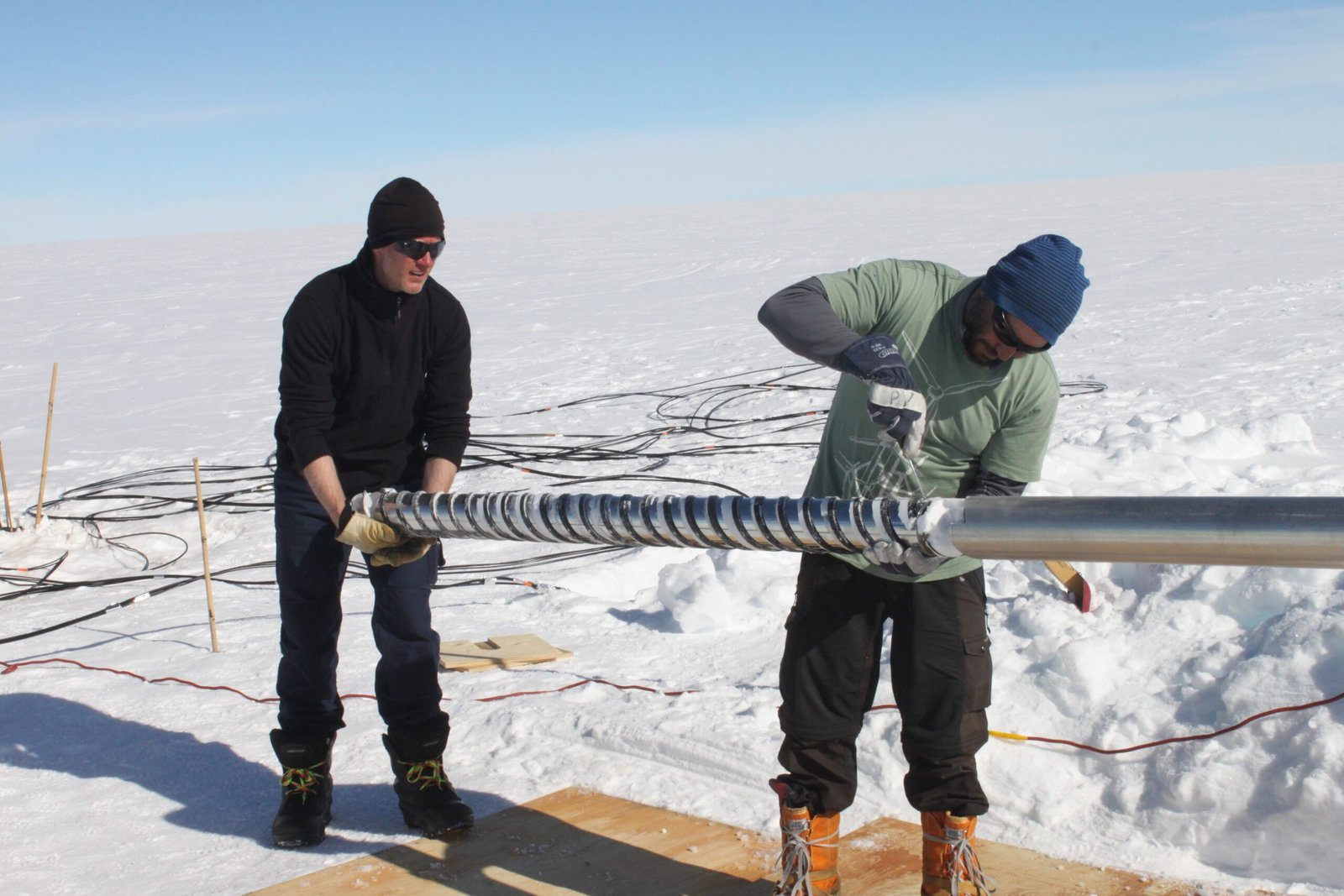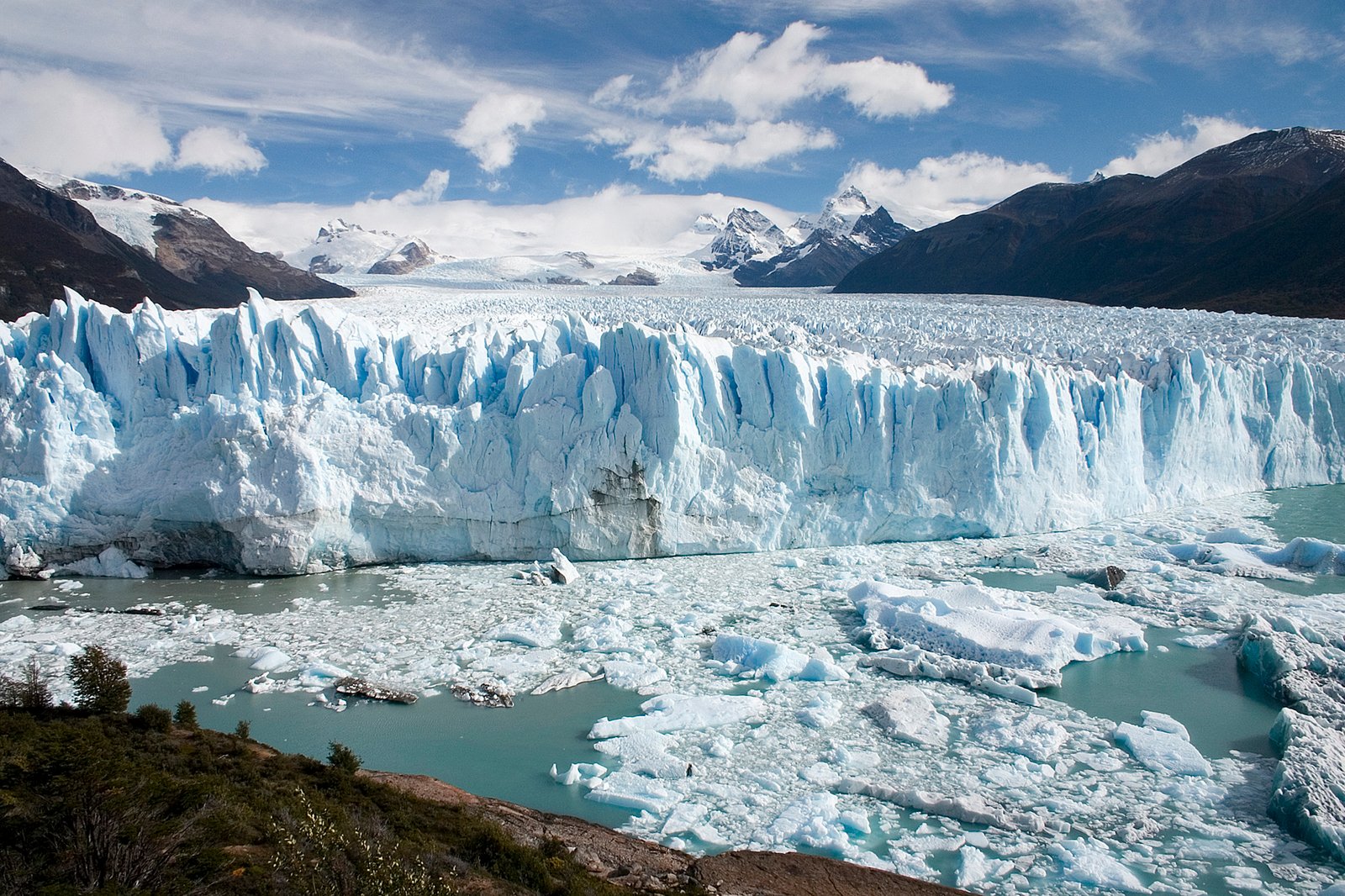Imagine standing at the edge of a glacier, the ancient ice gleaming blue and white, only to realize that the ground beneath your feet was buried under thick ice just a generation ago. The silence is haunting—broken only by the soft crackle of melting ice, like whispers of a vanished world. Over the past century, glaciers have receded at an astonishing pace, revealing secrets not just about our planet’s past, but also about the precarious future we face. The story of glacier retreat is a tale of beauty, loss, and undeniable warning—etched in ice, rock, and memory. Dive with me into this icy chronicle, where the ghosts of glaciers past show us what’s truly at stake.
Glaciers: The Ancient Sentinels of Earth
Glaciers are more than just frozen rivers; they are time capsules holding stories from thousands of years ago. Each layer of compressed snow and ice traps dust, air, and even ancient pollen, preserving a snapshot of the world as it once was. These icy masses are found on every continent except Australia, from the mighty Himalayas to the lonely peaks of Patagonia. For centuries, glaciers have acted as both guardians and storytellers, shaping landscapes and influencing human settlements. In many cultures, they are sacred, considered living beings that watch over the land. Their slow, relentless movement carves valleys, feeds rivers, and sustains millions with fresh water. Yet, in just a hundred years—a blink of an eye for these ancient giants—their retreat has become unmistakable.
The Century of Melting: A Timeline of Retreat
The 20th century marked a dramatic turn for glaciers around the world. Photographs from the early 1900s show sprawling ice fields and thick, snaking glaciers dominating mountain valleys. Fast forward to today, and those same spots are often barren rock or wildflower meadows. The retreat began subtly but accelerated sharply from the 1970s onward, coinciding with a surge in global temperatures. In places like the Alps and the Rockies, glaciers have lost more than half their mass since the 1850s. Scientists painstakingly compared old maps, satellite images, and aerial photos to track these changes, revealing a sobering truth: glaciers are disappearing far faster than they can be rebuilt. This timeline isn’t just a scientific record—it’s a visual testimony of a warming planet.
Why Glaciers Matter: More Than Just Ice
It’s easy to think of glaciers as distant, frozen relics, but their influence stretches much farther than the mountaintops. Glaciers store about 69% of the world’s fresh water, releasing it slowly each year to feed rivers and lakes. In dry seasons, this meltwater becomes a lifeline for farming communities and major cities alike. Beyond water, glaciers help regulate temperature by reflecting sunlight back into space—imagine them as Earth’s natural air conditioners. Their presence also stabilizes mountain ecosystems, providing unique habitats for plants and animals. When glaciers vanish, the consequences ripple downstream: rivers shrink, drinking water supplies falter, and the delicate balance of life in these regions is thrown off-kilter.
The Science Behind the Retreat: Temperature and Carbon
Glacier retreat isn’t random—it’s a direct response to rising temperatures and shifting weather patterns. Greenhouse gases like carbon dioxide trap heat in the atmosphere, pushing global temperatures upward. Even small increases—just a degree or two—can tip glaciers from growth to rapid melting. Scientists use climate models and ice core data to link this warming to human activities, especially the burning of fossil fuels. The relationship is clear: as our carbon footprint grows, glaciers shrink at an alarming rate. This isn’t just theory; it’s visible in real time, as century-old ice vanishes in mere decades. The science is as chilling as the landscape itself.
Melting Memories: What Glaciers Reveal About the Past
As glaciers retreat, they unveil landscapes not seen for thousands of years. Hidden forests, ancient animal bones, and even remnants of lost civilizations emerge from beneath the ice. In Norway, perfectly preserved Viking artifacts have surfaced from melting glaciers, providing a glimpse into a world long forgotten. These discoveries are both thrilling and unsettling—a reminder that today’s melting is exposing secrets locked away since the last Ice Age. Glacial ice itself traps ancient air bubbles, allowing scientists to study the atmosphere from centuries ago. Each drip of meltwater is like a page torn from history, rich with lessons and warnings.
Disappearing Giants: Case Studies from Around the World
The story of glacier retreat is global, but some examples are especially dramatic. The once-mighty Columbia Glacier in Alaska has retreated over 20 kilometers since 1980. In the Himalayas, glaciers are shrinking so rapidly that entire villages downstream face water shortages and increased risk of floods. Europe’s Mont Blanc Massif has lost vast stretches of ice, impacting everything from tourism to local wildlife. In Africa, Mount Kilimanjaro’s iconic snowcap may vanish entirely within decades. Each of these glaciers tells its own story, but together they echo a single, urgent message: no region is immune to the effects of climate change.
The Ripple Effects: Water Crisis and Food Security
When glaciers melt, the consequences don’t stop at the mountain base. Many of the world’s great rivers—such as the Ganges, Yangtze, and Indus—are powered by glacier melt. As these icy reservoirs shrink, downstream communities face dire water shortages, especially during dry seasons. This impacts everything from drinking water to irrigation for crops, threatening food security for millions. Fish populations suffer as river temperatures rise and flow diminishes. In some regions, disputes over shrinking water supplies have already sparked tension between nations. The loss of glaciers could reshape entire societies, not just landscapes.
Floods, Landslides, and Other Hazards
Glacier retreat isn’t just a slow melting; it can also trigger sudden, catastrophic events. As the ice recedes, it often leaves behind unstable lakes dammed by loose debris. These so-called “glacial lake outburst floods” can unleash torrents of water with little warning, destroying villages and infrastructure downstream. Melting ice also destabilizes mountain slopes, leading to more frequent landslides and rockfalls. In 2021, a massive glacier collapse in India’s Uttarakhand state caused a deadly flood, shocking communities and highlighting the risks. These hazards are becoming more common as glaciers retreat, adding a dangerous twist to the story of melting ice.
Wildlife on the Edge: Ecosystems in Peril
Glaciers are home to unique forms of life adapted to extreme cold and isolation. As the ice disappears, so do these habitats. Alpine plants, insects, and rare animals like the snow leopard depend on glacier-fed environments to survive. Some species have nowhere else to go, teetering on the edge of extinction as their world melts away. Even fish populations in glacier-fed rivers are at risk, struggling with warmer water and reduced oxygen levels. The loss of glaciers is a blow not just to individual species, but to entire ecosystems delicately balanced over millennia. The ripple effects may be impossible to fully predict.
Glacier Retreat as a Climate Change Indicator
Glaciers are often called the “canaries in the coal mine” for climate change. Unlike weather patterns, which can shift from year to year, glaciers record decades—and even centuries—of climate data in their icy layers. When they melt faster than they freeze, it’s a clear sign that something fundamental is changing in Earth’s system. Scientists use glacier measurements as a key indicator to track the pace and impact of global warming. The message is stark: as long as glaciers keep shrinking, the planet’s fever isn’t breaking. Their retreat is a warning we can’t afford to ignore.
The Human Connection: Cultures and Traditions at Risk
For centuries, people living near glaciers have woven these icy giants into their myths, religions, and daily lives. In the Andes, glaciers are seen as sacred ancestors, guardians of water and fertility. Himalayan communities rely on glacier-fed rivers for spiritual rituals and festivals. As the ice vanishes, so do these traditions, leaving a cultural void as well as practical hardships. Even mountain tourism—an economic lifeline for many regions—faces decline as the snowy landscapes disappear. The melting of glaciers is not just an environmental crisis; it’s a cultural and spiritual loss felt deeply by those who call these places home.
The Role of Technology: Tracking the Retreat

Advances in technology have revolutionized how we study glaciers. Satellites, drones, and time-lapse cameras capture the dramatic changes in real time, providing data at a scale never before possible. Scientists use laser scanning, GPS mapping, and even artificial intelligence to analyze glacier movement and predict future changes. These tools help researchers spot dangerous developments—like growing glacial lakes—and warn communities in advance. Technology has become our window into the secret life of glaciers, revealing patterns and threats that would otherwise go unnoticed. It’s a race against time to gather knowledge before the ice is gone.
Stories Beneath the Ice: Ancient Life and Lost Worlds
Every retreating glacier is a gateway into the deep past. In the Alps, the famous “Ötzi the Iceman”—a 5,300-year-old mummy—was discovered as the ice gave way. In the Yukon, ancient bison bones and Stone Age tools have emerged from melting permafrost. These findings add new chapters to human history, changing our understanding of migration, survival, and adaptation. But they also come with a bittersweet edge: the conditions that preserved these treasures for millennia are disappearing fast. Each discovery is a reminder of both nature’s power and its fragility.
The Science of Ice Cores: A Window Into Ancient Atmospheres

Ice cores are long cylinders drilled from deep within glaciers, and they are gold mines for climate scientists. Each layer in an ice core represents a year or even a season, trapping tiny bubbles of air from ages past. By analyzing these bubbles, researchers can reconstruct ancient climates, charting temperature, greenhouse gas levels, and even volcanic eruptions. Ice cores from Greenland and Antarctica have rewritten our understanding of Earth’s climate cycles. They reveal not only the natural rhythms of warming and cooling, but also the unmistakable spike in carbon dioxide since the Industrial Revolution. The story locked inside the ice is both fascinating and sobering.
The Acceleration Effect: Why Melting Speeds Up
One of the most shocking discoveries of recent decades is how quickly glacier melting can accelerate. As ice thins, it exposes darker rock and soil beneath, which absorb more sunlight and heat up even faster. This creates a feedback loop, speeding up the melting process. In some cases, glaciers lose meters of thickness in a single summer—far more than in previous centuries. Scientists call this the “albedo effect,” and it’s a powerful force driving glaciers to retreat faster than anyone expected. It’s like watching a snowman melt under a magnifying glass—once the process starts, it’s hard to stop.
Human Solutions: Can We Slow the Retreat?
The challenge of saving glaciers can feel overwhelming, but there are ways to make a difference. Reducing greenhouse gas emissions is the most crucial step—every ton of carbon dioxide kept out of the atmosphere slows the melting a little bit. Some communities are experimenting with creative solutions, like covering glaciers with reflective blankets during summer or building barriers to slow the melt. While these methods can help in the short term, the real answer lies in global cooperation and sustainable living. The fate of glaciers is tied to our choices, both big and small.
Personal Encounters: Witnessing Change With Your Own Eyes

There’s something unforgettable about seeing a glacier up close—the cold air, the deep blue ice, the sense of ancient power. But for many travelers and scientists, that awe is mixed with sadness. Many who return to the same glacier years later are shocked by the dramatic changes: familiar ice walls have vanished, and once-frozen valleys are now bare rock. These personal stories bring the science to life, showing just how quickly the world can change. It’s like visiting an old friend and finding them unrecognizable. The emotional impact lingers long after you leave the ice behind.
The Role of Art and Media: Making the Invisible Visible
Artists and filmmakers have played a powerful role in bringing glacier retreat to public attention. Through breathtaking photographs, haunting documentaries, and evocative paintings, they translate scientific data into emotion and meaning. Films like “Chasing Ice” have inspired viewers worldwide, using time-lapse footage to make the invisible visible. Art has the power to move people in ways that statistics alone cannot, sparking action and empathy. In a world saturated with information, these creative voices help keep the story of glaciers alive in our collective imagination.
Hope on the Horizon: Restoration and Resilience
Despite the grim headlines, there are reasons for hope. Some mountain communities are adapting with ingenuity, developing new water storage systems and switching to crops that need less water. Conservation groups are working to protect glacier-fed habitats and restore damaged landscapes. Global awareness of climate change is at an all-time high, with young people leading the charge for change. While the losses are real and painful, the resilience of both nature and humanity offers a glimmer of possibility. The story of glaciers isn’t finished yet—and neither is our response.
A Call From the Ice: What Will We Choose?
The ghosts of ice whisper not only of loss, but also of responsibility. The retreat of glaciers over the past hundred years is a clear signal that our actions have far-reaching consequences. Each melting glacier is both a warning and an invitation—to rethink how we live, to cherish what remains, and to fight for a future where icy sentinels still stand watch over our world. The choice is ours: will we listen to the voices of the ice, or let them fade into silence?



